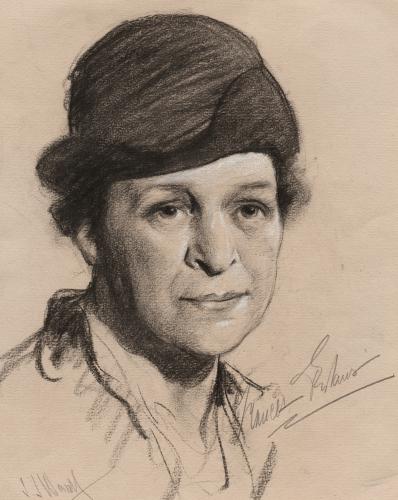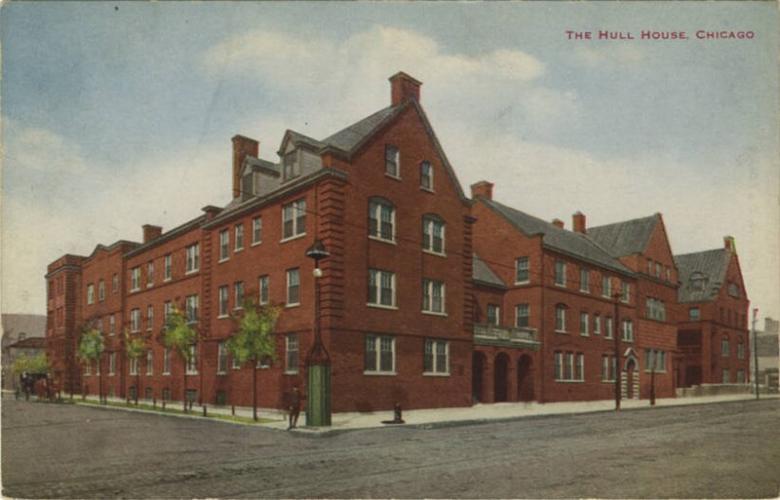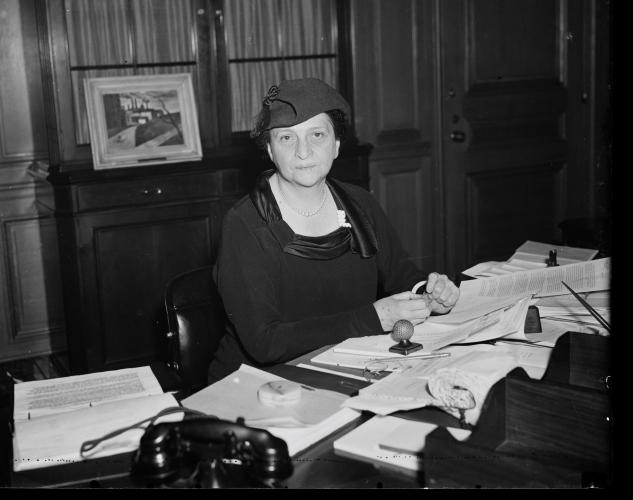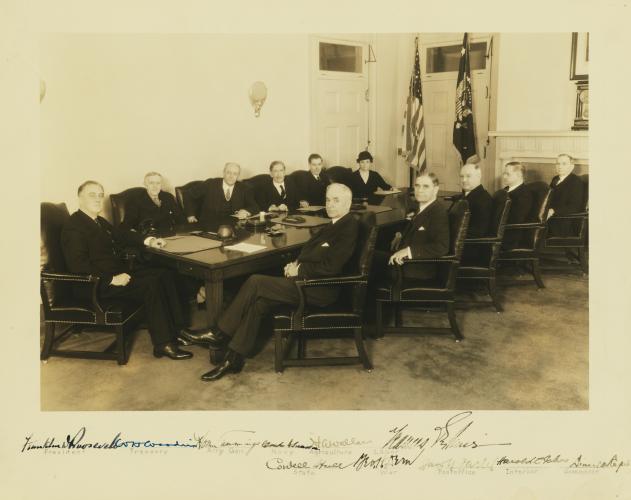
Sketched portrait of Frances Perkins by Samuel Johnson Woolf, 1933. National Portrait Gallery, Smithsonian Institution. Gift of Time magazine.
Born in 1880 in Boston, Massachusetts, Frances Perkins is known as the woman behind the New Deal legislation. A lifelong labor advocate and social reformer, Perkins’ dedication to workers’ rights and safety was shaped early on by the communities where she learned, lived, and worked.
Before beginning her career as a public servant, Perkins attended Mount Holyoke College, the oldest continuing institution of higher education for women in the nation. The school instilled in Perkins the belief that with education came responsibility and gave Perkins the sense of purpose that would fuel her lifelong fight for social reform. In her senior year, Perkins enrolled in an economic history class that required a visit to the nearby mills. The horrifying work conditions at the mills shocked Perkins and inspired her “to help change those abuses.” 1

The Hull-House in Chicago. Founded by Jane Adams and Ellen Gates Starr in 1889, it is one of the first settlement houses in the U.S. providing social services to the community. Image courtesy of Wikimedia Commons.
After graduating in 1902, Perkins moved to Chicago to begin teaching. She spent her free time at Hull-House working alongside a community of educated women to offer social services to the predominantly immigrant residents.2 Like many of the women volunteering at Hull-House, this continued exposure to the problems factory workers faced solidified Perkins’ commitment to fight for labor reform. She moved to New York in 1909 to begin a fellowship with the New York School of Philanthropy and then earned her master’s degree in sociology and economics from Columbia University. While there, Perkins witnessed an event that would prompt her to utilize her education and experience in ways that would change the future of national labor laws.
On March 25, 1911, the Triangle Shirtwaist Factory in Greenwich Village, New York, caught fire and killed 146 people. The factory doors had been locked to prevent theft, and many workers trapped inside died from smoke inhalation, fire, or jumped to their deaths. The majority of those killed were immigrant women and girls who had recently joined an industry-wide strike for shorter hours and better working conditions.3 This was a pivotal moment for Perkins who witnessed the fire and later commented “it was the day the New Deal was born.” 4

Secretary of Labor Frances Perkins at her desk in the Labor Department, 1936. Image courtesy of Wikimedia Commons.
After witnessing the factory fire, Perkins devoted her career to improving working conditions for Americans. Already a recognized authority in worker health and safety, Perkins served as an expert witness and testified to the Fire Investigating Commission that was established in response to the Triangle Shirtwaist Factory fire. Perkins was then appointed to the New York State Industrial Commission and eventually became Industrial Commissioner in 1929, where she began advocating for unemployment compensation after the stock market crashed. During her time serving on New York state commissions, she developed a friendship with New York State Governor Franklin D. Roosevelt.

A portrait of Franklin Roosevelt and Cabinet by Harris & Ewing Studio, 1933. National Portrait Gallery, Smithsonian Institution. Gift of Aileen Conkey.
When President Roosevelt won his election in 1933, he appointed Perkins as the Secretary of Labor. She was the first female cabinet member and held the position for 12 years. In this position, Perkins took on the responsibility of developing solutions to the problems caused by the Great Depression. She was a central force behind the Social Security Act of 1935, which created a retirement program for workers, unemployment insurance, and mandated compensation for work-related accidents. Perkins also drafted the Fair Labor Standards Act of 1938, banning child labor and establishing a minimum wage and 40-hour work week.
Perkins ended her government service career in 1952 and continued lecturing at the New York State School of Industrial and Labor Relations at Cornell University until her death in 1965. In 1979, the United States Department of Labor headquarters building on Constitution Avenue in Washington, D.C. was named in her honor.
Notes:
1. “The woman behind the new deal,” Frances Perkins Center, accessed April 4, 2024.
2. Jade Ryerson, “Hull-House,” National Park Service, accessed April 4, 2024.
Related Posts
Meredith Herndon is a writer and editor for the Smithsonian American Women’s History Museum.